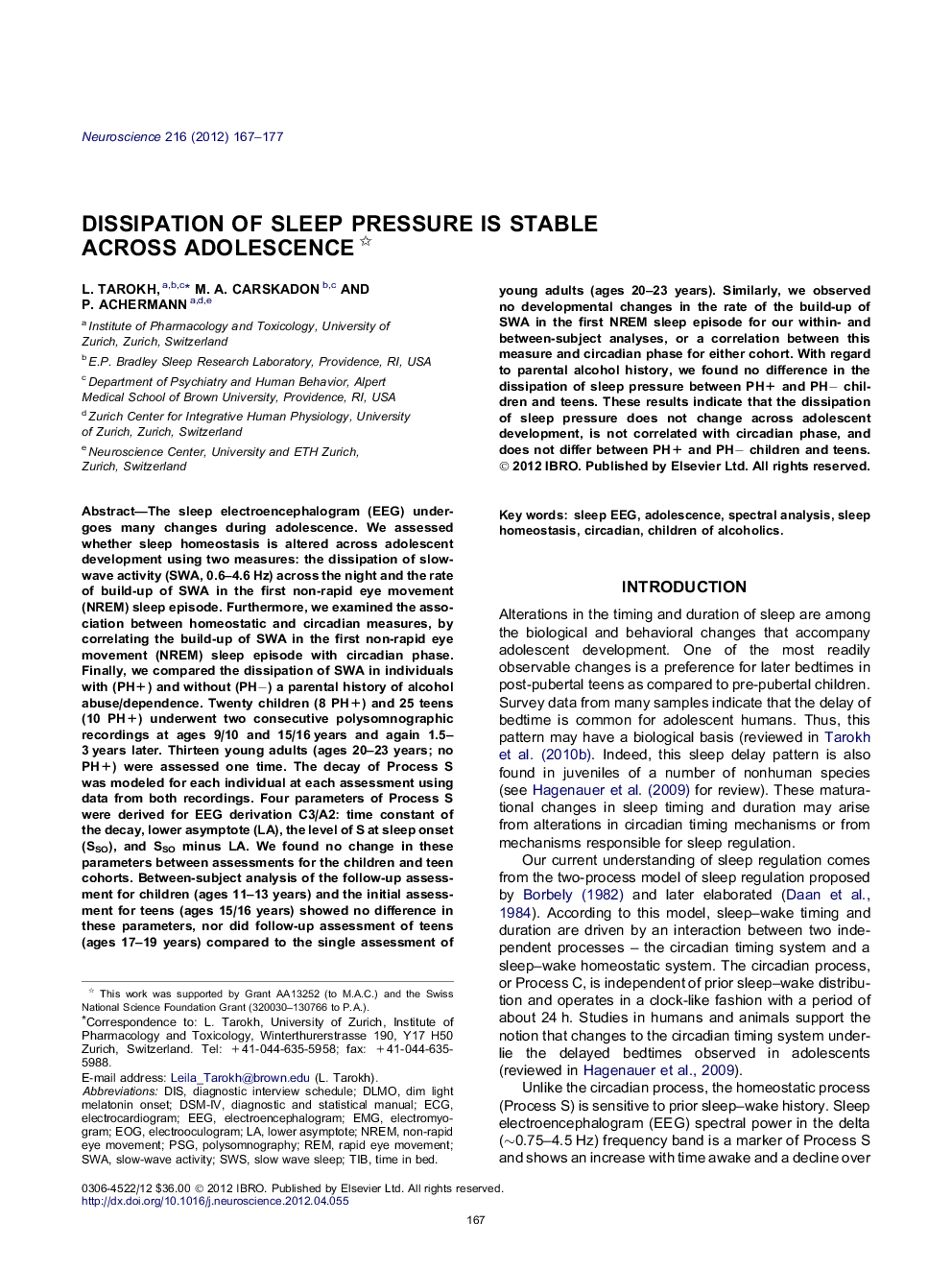| Article ID | Journal | Published Year | Pages | File Type |
|---|---|---|---|---|
| 4338408 | Neuroscience | 2012 | 11 Pages |
The sleep electroencephalogram (EEG) undergoes many changes during adolescence. We assessed whether sleep homeostasis is altered across adolescent development using two measures: the dissipation of slow-wave activity (SWA, 0.6–4.6 Hz) across the night and the rate of build-up of SWA in the first non-rapid eye movement (NREM) sleep episode. Furthermore, we examined the association between homeostatic and circadian measures, by correlating the build-up of SWA in the first non-rapid eye movement (NREM) sleep episode with circadian phase. Finally, we compared the dissipation of SWA in individuals with (PH+) and without (PH−) a parental history of alcohol abuse/dependence. Twenty children (8 PH+) and 25 teens (10 PH+) underwent two consecutive polysomnographic recordings at ages 9/10 and 15/16 years and again 1.5–3 years later. Thirteen young adults (ages 20–23 years; no PH+) were assessed one time. The decay of Process S was modeled for each individual at each assessment using data from both recordings. Four parameters of Process S were derived for EEG derivation C3/A2: time constant of the decay, lower asymptote (LA), the level of S at sleep onset (SSO), and SSO minus LA. We found no change in these parameters between assessments for the children and teen cohorts. Between-subject analysis of the follow-up assessment for children (ages 11–13 years) and the initial assessment for teens (ages 15/16 years) showed no difference in these parameters, nor did follow-up assessment of teens (ages 17–19 years) compared to the single assessment of young adults (ages 20–23 years). Similarly, we observed no developmental changes in the rate of the build-up of SWA in the first NREM sleep episode for our within- and between-subject analyses, or a correlation between this measure and circadian phase for either cohort. With regard to parental alcohol history, we found no difference in the dissipation of sleep pressure between PH+ and PH− children and teens. These results indicate that the dissipation of sleep pressure does not change across adolescent development, is not correlated with circadian phase, and does not differ between PH+ and PH− children and teens.
► We find no change in the dissipation of sleep pressure across adolescence. ► Sleep homeostasis comparable in teens with/without a parental history of alcoholism. ► No association between DLMO phase angle and rise of SWA in the first NREM sleep episode.
